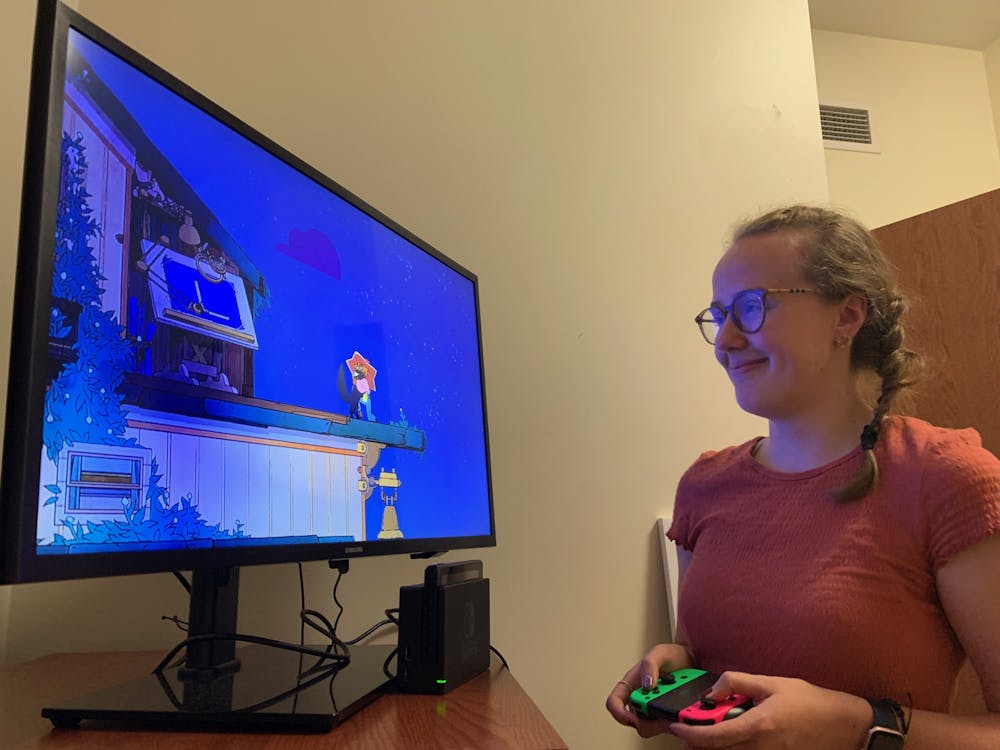Earlier this summer, I surfed on the Nintendo store, looking for a game I could dive into before the fall semester started. The sale section caught my eye as a college student looking for a good deal, and I stumbled across the 2020 game “Spiritfarer.”
I’d heard good things on social media about this game, the visuals looked amazing and the mechanics fit my relaxed video game preference.
The main character in “Spiritfarer,” Stella, is tasked with guiding spirits to the realm after creating bonds with them as the next Spiritfarer, journeying through this unknown world on a pirate-like ship. The Everdoor is the most important place in this world since it’s where Stella carries spirits; a beautiful yet haunting space of red water reflected in a circular arch.
Each new place is accompanied by music to fit, a small detail that makes me love it even more. I could talk about the score for days, and I sometimes turn on my Switch to listen to it while doing homework or reading.
This game is a perfect mix of Animal Crossing visuals, Stardew Valley music and Super Mario Bros platformer with an open-world function. It reminds players to care for their passengers by feeding them their favorite foods, hugging them when they’re sad and even sleeping when it gets too late to travel.
Beyond the relationships players build with the spirits they meet, there are a lot of building elements required to progress in the game. Each spirit has their own customized house based on their character design, and the player has to travel across the realm to find rare materials and play mini-games in the process.
One of my favorite mini-games is one where Stella cures a dragon afflicted with a mineral plague (Aluminum, Quartz, etc.) and helps remove barnacle-like stones from its back.
My English major heart also loves the deep narrative structure embedded in this game.
Aesthetic games like “Spiritfarer” create a whole subgenre of beautifully visual games with deep narrative arcs. For people who are afraid of first-person shooters like Fortnite and Call of Duty but bored of short-form mobile games, the cozy aesthetic game genre is the perfect place to begin an exploration into video games.
When I discovered Animal Crossing as a kid, I couldn’t believe a video game could look so cute. I’d grown up with Sonic the Hedgehog, Smash bros and Mario Kart, games that relied on fighting or competition to succeed.
Animal Crossing taught me so many things about regular life at a young age — learning to pay your mortgage, try not to upset your neighbors and shop wisely. I also learned about wildlife without knowing I was learning about wildlife. The Animal Crossing engine aligns to the player’s hemisphere so the flora and fauna are in season based on the player’s time clock.
Other game genres have clear goals and objectives. These games create an experience for the player to find their passions within the game.
Enjoy what you're reading?
Signup for our newsletter
The spirits you meet in this game have passed from the mortal world, yet they still hold onto something that happened in their previous life. Stella is tasked with listening to these spirits and preparing them for transition into a new world. Some spirits will pull at your heartstrings. Others will annoy you and make you hope that their transition is fast. But that’s what I loved about this game: it makes you journey through each person’s life regardless of who they are as people.
Video games have stereotypes of violence, gore and explicit content that turn people away from exploring how many creative and beautiful games are waiting for players to find them. Just like “Spiritfarer” for me, had I not gone onto my Switch looking for a new adventure, I would have never known about this enchanting game and its haunting yet comforting take on death.
Rating: 9/10




